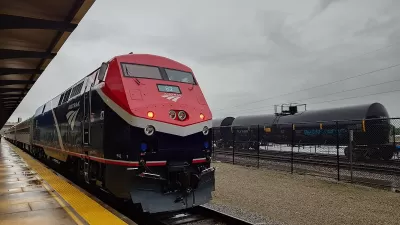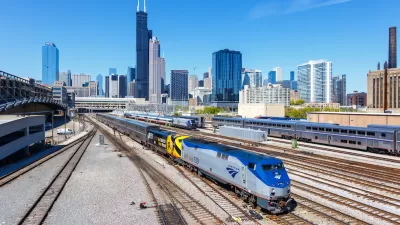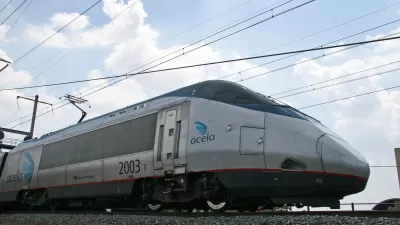The Borealis line provided more than 18,500 rides since its first trips in May.

A new Amtrak passenger rail line linking St. Paul, Minnesota and Chicago turned a profit in its first month of service, a rare feat for the agency.
The Borealis line served over 18,500 passengers since it launched in May and took in $600,000 in revenue, writes Tim Harlow in the Star Tribune. The agency spent $500,000 on operations, making the Borealis one of two state-sponsored Amtrak lines (of a total of 30) to make a profit.
“Westbound trips out of Chicago saw slightly higher ridership with an average of 330 riders while eastbound trips carried about 288 passengers, according to Amtrak,” adds Harlow. “Officials say the Twin Cities-to-Milwaukee-to-Chicago route has high potential and could see even more passengers as the service matures. The line also serves several markets with colleges and universities, which could also attract students this fall, said Ray Lang, Amtrak's vice president of state-supported services.”
Other Amtrak routes also saw increases in ridership. “The Empire Builder, the other Amtrak route serving the Twin Cities, saw a 15% ridership growth from fiscal year 2022 to 2023. The train running from Chicago to the Twin Cities to Fargo-Moorhead and then to the Pacific Northwest cities of Portland and Seattle saw ridership rise from 303,500 to nearly 349,000 from October 1, 2022, to September 30, 2023, Amtrak figures show.”
FULL STORY: Amtrak's Borealis from Twin Cities to Chicago sees strong ridership, turns early profit

Study: Maui’s Plan to Convert Vacation Rentals to Long-Term Housing Could Cause Nearly $1 Billion Economic Loss
The plan would reduce visitor accommodation by 25,% resulting in 1,900 jobs lost.

North Texas Transit Leaders Tout Benefits of TOD for Growing Region
At a summit focused on transit-oriented development, policymakers discussed how North Texas’ expanded light rail system can serve as a tool for economic growth.

Why Should We Subsidize Public Transportation?
Many public transit agencies face financial stress due to rising costs, declining fare revenue, and declining subsidies. Transit advocates must provide a strong business case for increasing public transit funding.

How to Make US Trains Faster
Changes to boarding platforms and a switch to electric trains could improve U.S. passenger rail service without the added cost of high-speed rail.

Columbia’s Revitalized ‘Loop’ Is a Hub for Local Entrepreneurs
A focus on small businesses is helping a commercial corridor in Columbia, Missouri thrive.

Invasive Insect Threatens Minnesota’s Ash Forests
The Emerald Ash Borer is a rapidly spreading invasive pest threatening Minnesota’s ash trees, and homeowners are encouraged to plant diverse replacement species, avoid moving ash firewood, and monitor for signs of infestation.
Urban Design for Planners 1: Software Tools
This six-course series explores essential urban design concepts using open source software and equips planners with the tools they need to participate fully in the urban design process.
Planning for Universal Design
Learn the tools for implementing Universal Design in planning regulations.
Ascent Environmental
Borough of Carlisle
Institute for Housing and Urban Development Studies (IHS)
City of Grandview
Harvard GSD Executive Education
Toledo-Lucas County Plan Commissions
Salt Lake City
NYU Wagner Graduate School of Public Service





























